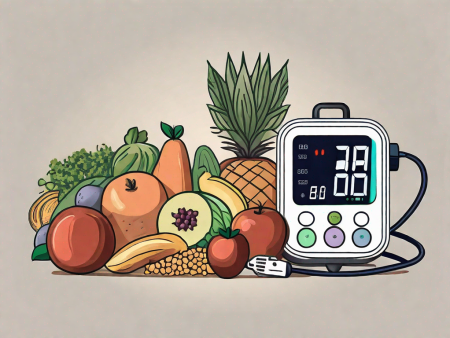Learn how to distinguish between various types of arthritis, including osteoarthritis, rheumatoid arthritis, and psoriatic arthritis.
How to Differentiate Between Different Types of Arthritis
Arthritis is a common condition that affects millions of people worldwide. Despite its prevalence, many individuals are unaware that there are actually different types of arthritis. Understanding the differences between these types is crucial for proper diagnosis and treatment. In this article, we will explore the various forms of arthritis, their symptoms, and how they can be distinguished from one another.

Understanding Arthritis: An Overview
Arthritis is a term used to describe inflammation in one or more joints. It can cause pain, stiffness, and swelling, which can significantly impact a person’s quality of life. While arthritis is often associated with older individuals, it can affect people of all ages, including children.
Arthritis is a condition that affects millions of people worldwide. It is a complex and multifaceted disease that can arise from various factors. One of the primary causes of arthritis is genetics. Certain genes can make individuals more susceptible to developing arthritis. However, genetics alone cannot fully explain the development of arthritis.
Another significant factor in the development of arthritis is autoimmune disorders. In autoimmune disorders, the body’s immune system mistakenly attacks its own tissues, including the joints. This immune response leads to inflammation and the subsequent development of arthritis. Rheumatoid arthritis and psoriatic arthritis are examples of autoimmune-related arthritis.
Additionally, wear and tear on the joints can contribute to the development of arthritis. This type of arthritis is known as osteoarthritis, and it commonly occurs as people age. Over time, the cartilage that cushions the joints wears down, leading to pain, stiffness, and reduced range of motion.
What is Arthritis?
Arthritis is a complex condition that can arise from various factors, such as genetics, autoimmune disorders, or wear and tear on the joints. The most common forms of arthritis include osteoarthritis, rheumatoid arthritis, psoriatic arthritis, and gout.
Osteoarthritis is the most prevalent form of arthritis and typically occurs in older individuals. It primarily affects the weight-bearing joints, such as the knees, hips, and spine. Osteoarthritis is characterized by the gradual breakdown of cartilage, leading to joint pain, stiffness, and reduced mobility.
Rheumatoid arthritis, on the other hand, is an autoimmune disorder that can affect people of all ages. It occurs when the immune system mistakenly attacks the synovium, a thin membrane that lines the joints. This attack leads to inflammation, joint pain, swelling, and eventually, joint deformity if left untreated.
Psoriatic arthritis is a type of arthritis that develops in individuals with psoriasis, a chronic skin condition. It can cause joint pain, stiffness, and swelling, often affecting the fingers and toes. Psoriatic arthritis can also lead to nail changes and eye inflammation.
Gout is a form of arthritis that occurs due to the buildup of uric acid crystals in the joints. It commonly affects the big toe but can also affect other joints. Gout attacks can cause severe pain, swelling, redness, and tenderness in the affected joint.
Common Symptoms of Arthritis
While different types of arthritis have unique characteristics, some common symptoms may indicate the presence of arthritis. These symptoms can include joint pain, swelling, stiffness, reduced range of motion, and warmth or redness around the affected area. It is essential to consult a healthcare professional to determine the exact type of arthritis one may be experiencing.
Joint pain is one of the hallmark symptoms of arthritis. It can range from mild discomfort to severe, debilitating pain. The pain may be constant or intermittent, and it can worsen with movement or activity.
Swelling is another common symptom of arthritis. Inflammation in the joints can cause them to become swollen and puffy. This swelling can make it difficult to move the affected joint and may lead to a feeling of stiffness.
Stiffness is a prevalent symptom of arthritis, especially in the morning or after periods of inactivity. The affected joints may feel stiff and difficult to move, making it challenging to perform daily tasks.
Reduced range of motion is often associated with arthritis. As the disease progresses, the joints may become increasingly stiff and lose their flexibility. This can limit the ability to fully extend or bend the affected joint.
Warmth or redness around the affected area is a sign of inflammation in the joints. The skin around the joint may feel warm to the touch and appear red or flushed. This inflammation is a result of the immune system’s response to the presence of arthritis.
It is important to note that the symptoms of arthritis can vary from person to person and depend on the specific type of arthritis. Some individuals may experience mild symptoms that come and go, while others may have more severe and chronic symptoms.
The Different Types of Arthritis
Arthritis can manifest in various forms, each with its own distinctive features. Understanding the different types of arthritis is crucial for proper diagnosis and treatment.
Osteoarthritis
Osteoarthritis is the most common type of arthritis, typically associated with aging and wear and tear on the joints. It occurs when the protective cartilage that cushions the ends of bones wears down over time, leading to pain and stiffness. Osteoarthritis often affects weight-bearing joints such as the knees, hips, and spine.
As the cartilage deteriorates, bone spurs may form, further contributing to joint pain and limited mobility. The symptoms of osteoarthritis can vary from mild discomfort to severe pain that affects daily activities. While there is no cure for osteoarthritis, various treatments, including medication, physical therapy, and lifestyle modifications, can help manage the symptoms and improve quality of life.
Rheumatoid Arthritis
Rheumatoid arthritis is an autoimmune disease that causes chronic inflammation in the joints. It occurs when the immune system mistakenly attacks healthy joint tissues, leading to pain, swelling, and joint deformity. Unlike osteoarthritis, rheumatoid arthritis can affect multiple joints simultaneously and may also involve other organs in the body.
The exact cause of rheumatoid arthritis is unknown, but genetic and environmental factors are believed to play a role. Early diagnosis and aggressive treatment are essential to prevent joint damage and disability. Medications, physical therapy, and lifestyle changes can help manage symptoms and slow down the progression of the disease.
Psoriatic Arthritis
Psoriatic arthritis is a specific type of arthritis that occurs in individuals with psoriasis, a skin condition characterized by red, scaly patches. This form of arthritis can cause joint pain, stiffness, and swelling, often affecting the joints of the fingers and toes. It may also lead to changes in the nails and other symptoms commonly associated with psoriasis.
Psoriatic arthritis can vary widely in its presentation, with some individuals experiencing mild joint discomfort and others facing severe joint damage. Early diagnosis is crucial to prevent irreversible joint damage. Treatment options for psoriatic arthritis include medications, physical therapy, and lifestyle modifications.
Gout
Gout is a form of arthritis that occurs when there is an excessive buildup of uric acid in the body. Uric acid crystals then collect in the joints, leading to sudden and intense pain, swelling, and tenderness. Gout commonly affects the big toe but can also involve other joints such as the ankles, knees, and wrists.
Factors such as genetics, diet, and certain medical conditions can contribute to the development of gout. Acute gout attacks can be excruciatingly painful and may require medication to relieve symptoms. Long-term management of gout involves lifestyle changes, such as dietary modifications and maintaining a healthy weight, to prevent future flare-ups.
It is important to note that there are other types of arthritis as well, such as reactive arthritis, infectious arthritis, and juvenile idiopathic arthritis. Each type has its own unique characteristics and treatment approaches. If you are experiencing joint pain or suspect you may have arthritis, it is recommended to consult with a healthcare professional for an accurate diagnosis and appropriate management plan.
Diagnosing Different Types of Arthritis
Accurately diagnosing the specific type of arthritis is crucial for determining the most effective treatment plan. Healthcare professionals use various methods to identify and differentiate between different types of arthritis.
Medical History and Physical Examination
A comprehensive medical history and physical examination are typically the first steps in diagnosing arthritis. Healthcare providers evaluate symptoms, assess joint function, and inquire about the presence of underlying medical conditions or family history of arthritis.
During the physical examination, healthcare professionals may observe and palpate the joints to assess for swelling, tenderness, warmth, and range of motion. They may also evaluate other parts of the body, such as the skin and nails, as certain types of arthritis can present with characteristic skin changes or nail abnormalities.
Additionally, healthcare providers may ask specific questions to gather more information about the onset, duration, and pattern of joint symptoms. They may inquire about any factors that worsen or alleviate the symptoms, such as physical activity, rest, or certain medications.
Furthermore, the medical history may reveal any previous injuries or infections that could be contributing to the development of arthritis. It may also uncover any occupational or lifestyle factors that could be influencing joint health.
Laboratory Tests
Laboratory tests, such as blood tests, can help detect certain markers that may indicate the presence of specific types of arthritis. For example, rheumatoid factor and anti-cyclic citrullinated peptide (anti-CCP) antibodies are often elevated in individuals with rheumatoid arthritis.
In addition to these specific markers, blood tests may also assess for markers of inflammation, such as C-reactive protein (CRP) and erythrocyte sedimentation rate (ESR). Elevated levels of these markers can indicate the presence of inflammation in the body, which is a common feature of many types of arthritis.
Furthermore, laboratory tests may be used to rule out other conditions that can mimic arthritis symptoms, such as infections or certain autoimmune diseases.
Imaging Tests
Imaging tests, including X-rays, magnetic resonance imaging (MRI), and ultrasound, provide insights into the structural changes occurring within the joints. These imaging techniques can help healthcare professionals visualize joint damage, inflammation, and other abnormalities associated with arthritis.
X-rays are commonly used to assess for joint damage, such as the presence of bone erosions, joint space narrowing, or the formation of bone spurs. They can also help determine the extent of joint involvement and monitor disease progression over time.
MRI scans are particularly useful for evaluating soft tissues, such as tendons, ligaments, and cartilage. They can provide detailed images of joint inflammation, synovitis, and the presence of fluid accumulation within the joints.
Ultrasound, on the other hand, is a dynamic imaging technique that allows healthcare professionals to visualize joint movement and assess for abnormalities in real-time. It can help detect synovitis, joint effusion, and the presence of crystal deposits, which are characteristic of certain types of arthritis.
By combining the information obtained from the medical history, physical examination, laboratory tests, and imaging studies, healthcare professionals can make a more accurate diagnosis and tailor the treatment plan to the specific type of arthritis.
Treatment Options for Different Types of Arthritis
While there is no cure for arthritis, various treatment options can help manage symptoms and improve a person’s quality of life.

Medications for Arthritis
Medications play a crucial role in treating arthritis symptoms and reducing inflammation. Nonsteroidal anti-inflammatory drugs (NSAIDs), corticosteroids, disease-modifying antirheumatic drugs (DMARDs), and biologic agents are among the medications commonly used to manage arthritis pain and inflammation.
Physical Therapy and Exercise
Physical therapy and exercise can help strengthen the muscles surrounding the affected joints, improve joint flexibility, and relieve pain. Low-impact exercises, such as swimming and cycling, are generally recommended for individuals with arthritis, as they minimize stress on the joints.
Surgical Options
In severe cases where conservative treatments fail to provide sufficient relief, surgery may be an option. Joint replacement surgery, arthroscopy, and joint fusion are among the surgical interventions available for those with advanced arthritis.
Arthritis can significantly impact a person’s quality of life, but understanding the different types of arthritis and their unique characteristics is vital for proper diagnosis and treatment. Whether it’s osteoarthritis, rheumatoid arthritis, psoriatic arthritis, or gout, consulting a healthcare professional is essential to develop a tailored treatment plan.
Remember, early detection and management of arthritis symptoms can help individuals live a more comfortable and active life. So, if you suspect you may have arthritis, don’t hesitate to seek medical advice and embark on your journey to better joint health!







Can you be more specific about the content of your article? After reading it, I still have some doubts. Hope you can help me.
You’ve the most impressive websites.
The articles you write help me a lot and I like the topic
Thank you for being of assistance to me. I really loved this article.
Thank you for providing me with these article examples. May I ask you a question?
Thank you for your articles. They are very helpful to me. Can you help me with something?
Thank you for your help and this post. It’s been great.
We are a group of volunteers and opening a new scheme in our community. Your site provided us with valuable info to work on. You have done an impressive job and our entire community will be grateful to you.